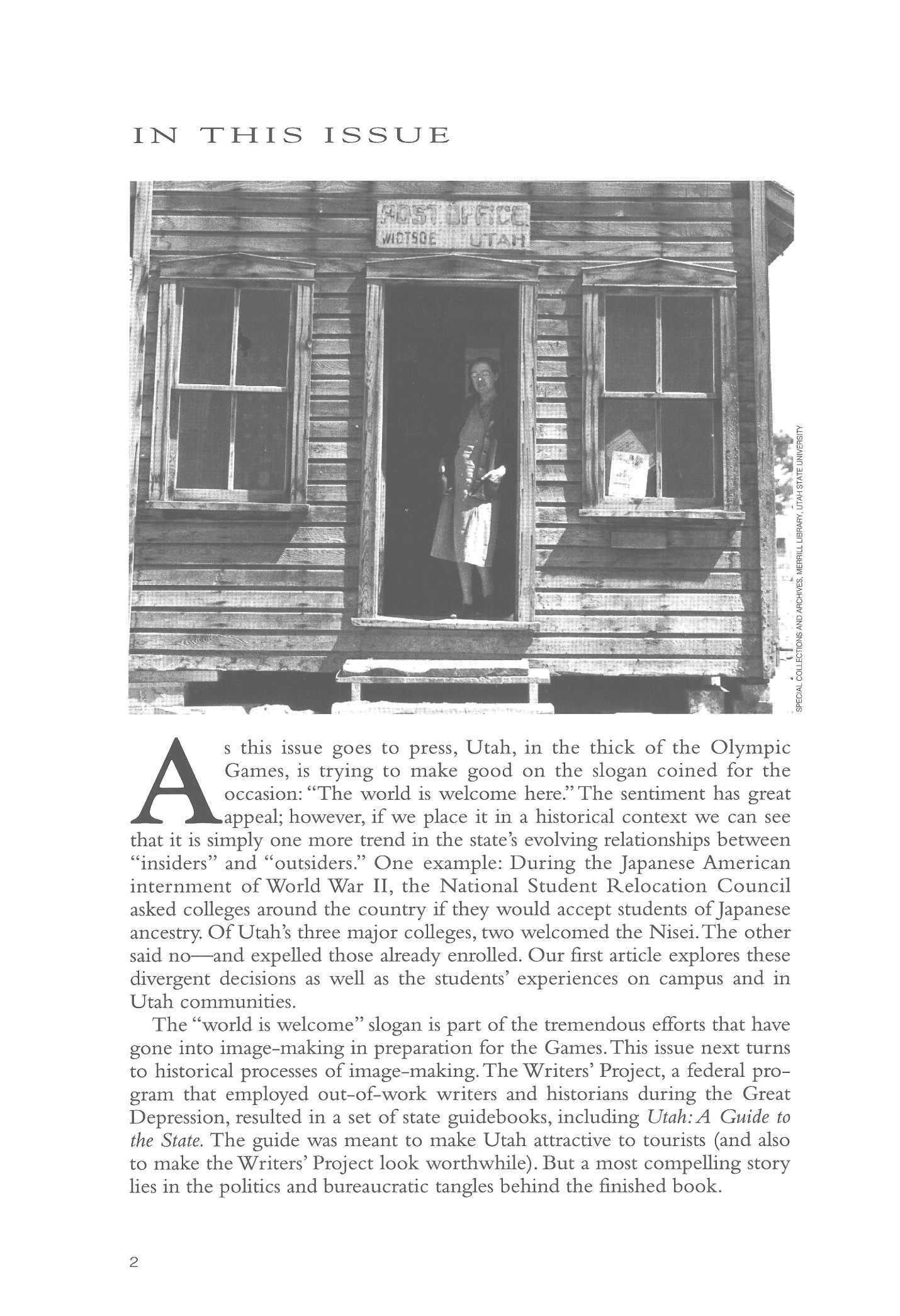
3 minute read
In This Issue
As this issue goes to press, Utah, in the thick of the Olympic Games, is trying to make good on the slogan coined for the occasion:" The world is welcome here. "The sentiment has great appeal; however, if we place it in a historical context we can see that it is simply one more trend in the state's evolving relationships between "insiders" and "outsiders." One example: During the Japanese American internment of World War II, the National Student Relocation Council asked colleges around the country if they would accept students of Japanese ancestry. Of Utah's three major colleges, two welcomed the Nisei. The other said no—and expelled those already enrolled. Our first article explores these divergent decisions as well as the students' experiences on campus and in Utah communities.
The "world is welcome" slogan is part of the tremendous efforts that have gone into image-making in preparation for the Games. This issue next turns to historical processes of image-making. The Writers' Project, a federal program that employed out-of-work writers and historians during the Great Depression, resulted in a set of state guidebooks, including Utah: A Guide to the State. The guide was meant to make Utah attractive to tourists (and also to make the Writers' Project look worthwhile) But a most compelling story lies in the politics and bureaucratic tangles behind the finished book.
Also during the depression, Dorothea Lange came to Utah with her camera and an agenda. As our third article explains, her well known 1930s photos of Utah do not necessarily reflect reality; instead, she created them as propaganda tools to garner support for federal farm relief programs
Juxtaposed with the Lange images, a photo essay on the Castle Gate Mine explosion of 1924 offers opportunity for further reflection on the hypothesis that every photo reflects an agenda Today's viewer cannot know -whether the photographer had a political purpose in mind, but the images certainly make a forceful statement even today
Last, we turn to a man who took up a lifelong crusade to transform St. George both in image and in fact. Orval Hafen worked on many fronts toward his goal of making a destination tourist attraction out of this agricultural town. Although the image he held in his mind and communicated to others did not accomplish this feat alone, it planted vital seeds.
Now, for the Olympic Games and beyond, Utah organizations continue to tweak—or recast—public images. Future historians will have the opportunity to set the Games, with their catchy slogans, banners, media events, and more, in the larger context of evolving public relations. In the meantime, readers of this journal may find it interesting indeed to compare the PR. goals and challenges of today with those of past decades.
- Photo Madge Young Nielson, Widtsoe postmistress, photographed by Dorothea Lange in 1936.







